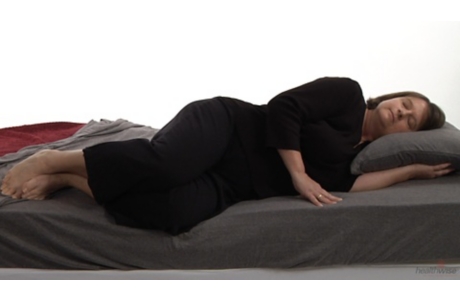Sciatica
What is sciatica?
Sciatica is pain, tingling, or numbness produced by an irritation of the nerve roots that lead to the sciatic nerve. The sciatic nerve is formed by the nerve roots coming out of the spinal cord into the lower back. It goes down through the buttock, then its branches extend down the back of the leg to the ankle and foot.
What causes it?
The most common cause of sciatica is a bulging or ruptured disc (herniated disc) in the spine. The disc can irritate or press against the nerve roots that lead to the sciatic nerve. But sciatica also can be a symptom of other conditions that affect the spine. These can include the narrowing of the spinal canal (spinal stenosis), bone spurs (small, bony growths that form along joints) caused by arthritis, or nerve root compression (pinched nerve) caused by injury. In rare cases, sciatica can also be caused by conditions that do not involve the spine, such as tumors or pregnancy.
What are the symptoms?
Symptoms of sciatica include pain that begins in your back or buttock and moves down your leg and may move into your foot. Weakness, tingling, or numbness in the leg may also occur.
- Sitting, standing for a long time, and movements that cause the spine to flex (such as knee-to-chest exercises) may make symptoms worse.
- Walking, lying down, and movements that extend the spine (such as press-ups) may relieve symptoms.
How is it diagnosed?
Sciatica is diagnosed with a medical history and physical exam. Sometimes X-rays and other tests such as magnetic resonance imaging (MRI) are done to help find the cause of the sciatica.
How is sciatica treated?
In many cases, sciatica will improve and go away with time. Initial treatment usually focuses on medicines and exercises to relieve pain. You can help relieve pain by:
- Avoiding sitting (unless it is more comfortable than standing).
- Alternating lying down with short walks. Increase your walking distance as you are able to without pain.
- Using a heating pad on a low or medium setting for 15 to 20 minutes every 2 or 3 hours. Try a warm shower in place of one session with the heating pad. You can also buy single-use heat wraps that last up to 8 hours. You can also try an ice pack for 10 to 15 minutes every 2 to 3 hours. There is not strong evidence that either heat or ice will help, but you can try them to see if they help you.
Ask your doctor if you can take over-the-counter pain medicine. Nonsteroidal anti-inflammatory drugs (NSAIDs) such as ibuprofen (Advil, Motrin) or naproxen (Aleve) seem to work best. But if you can't take NSAIDs, you can try acetaminophen (Tylenol). Be safe with medicines. Read and follow all instructions on the label.
Additional treatment for sciatica depends on what is causing the nerve irritation. If your symptoms do not improve, your doctor may suggest physical therapy, injections of medicines such as steroids, other medicines that can help with nerve pain, or even surgery for severe cases.
Related Information
Credits
Current as of: December 3, 2024
Author: Ignite Healthwise, LLC Staff
Clinical Review Board
All Ignite Healthwise, LLC education is reviewed by a team that includes physicians, nurses, advanced practitioners, registered dieticians, and other healthcare professionals.
Current as of: December 3, 2024
Author: Ignite Healthwise, LLC Staff
Clinical Review Board
All Ignite Healthwise, LLC education is reviewed by a team that includes physicians, nurses, advanced practitioners, registered dieticians, and other healthcare professionals.











